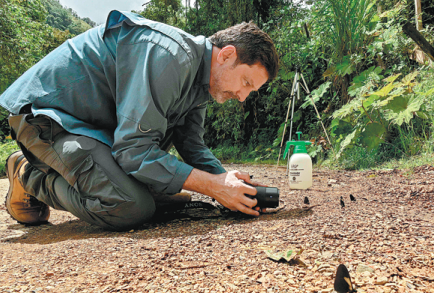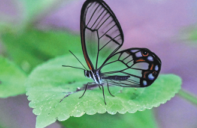Butterfly snapper shoots to thrill conservationists

JARDIN, Colombia-Like the more than 3,000 species of butterflies in Colombia, agronomist Juan Guillermo Jaramillo underwent his own metamorphosis several years ago, as his passion for photographing nature took an unexpected twist.
The 65-year-old, who used to run an animal feed business, originally took photographs of birds, but he is now a key figure in the world of Colombian butterflies.
Jaramillo is the co-author of an inventory that led to Colombia being recognized as having the widest variety of butterfly species in the world.
The list he worked on was published in the British Natural History Museum in London-home to the world's largest collection of butterflies-in June.
The Checklist of Colombian Butterflies identifies 3,642 species in the Andean country, which makes up 19.4 percent of the known global varieties.
But Jaramillo is keen to point out he is not a collector.
"I broke from the traditional image associated with butterflies of collectors that kill them, put them in an envelope and then pin them to the inside of a box," Jaramillo said. "I'm simply not capable of killing them."
Like bees, butterflies are pollinators vital to the ecosystem. They are also an important source of food for birds and snakes.
Yet their habitats are under threat from deforestation, agriculture and global warming.
Jaramillo, who lives in the southwestern Antioquia department, has an archive of 220,000 photos of butterflies and has captured images of 1,500 species.
Jaramillo has spent the last 15 years trekking through jungles and woodlands in search of the "winged jewels"-a dangerous pastime given those areas are infested with armed groups and drug traffickers.
"I want to go to many places but there are some I don't go to out of fear," said Jaramillo.
When he does venture out, Jaramillo takes with him a camera, tripod and a container of pink liquid he prepares every morning: shrimp bait. Having tried various other types of bait, he found shrimp worked best.
'Almost like models'
He spreads the foul-smelling bait on rocks and leaves by a rushing stream, and even lays out cotton balls soaked in the liquid.
"That's how I make them think it's bird droppings," he explained. "When the butterflies land on a leaf they stay there for quite some time, ... they're almost like models."
"Without the bait, it would be impossible to see certain species in the woodland because they live in very tall trees."
Another potential barrier is the weather.
"If there's no sun, there are no butterflies," he said.
Jaramillo used to be a bird watcher and also compiled an inventory of the species he observed.
Colombia boasts the widest varieties of bird species and orchids, according to the United Nations' Convention on Biological Diversity.
It was the switch from film to digital photography that sparked Jaramillo's conversion to butterflies.
"Taking a good photo of birds is very difficult because you need very big, heavy lenses."
While filming birds, he also took photos of butterflies and was amazed by their colors and shapes.
It opened up a vast world to Jaramillo. After beetles, butterflies and moths are the most numerous insect on the planet with almost 160,000 described species.
"In Colombia, I think there are about twice as many species of butterflies as birds," said Kim Garwood, Jaramillo's fellow inventory author.
"In the Andes I have been told there are about 10-15 percent of the butterfly species that are undescribed. We have many photos of undescribed species."
Agencies via Xinhua


Today's Top News
- New plan will be a road map for a stronger future
- Taiwan's character of the year a vote against confrontation
- Strengthened resilience key for economy
- Video sheds new light on Japan's wartime atrocities
- Xi: World yearns for peace, trust more than ever
- Group calls for stronger, more inclusive UN






























